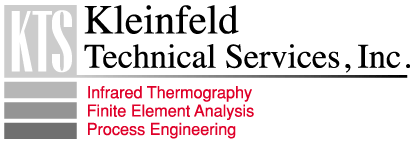Heating Up a Surface Part 1: Testing Emissivity
Sponsored by:

Heating Up a Surface Part 1: Testing Emissivity
It is often necessary to heat a surface to check its emissivity. Various methods are used in the field, some of which have possible problems.
One method is to use a radiant heating source such as a high intensity light to heat the surface and the adjacent or contained reference which is typically a patch of electrical tape. This will cause uneven heating of the unknown (to be measured) surface in comparison with the reference surface such as electrical tape. The pickup of energy by the unknown and the reference will be impacted by their relative emissivities.
Another method uses a heat gun or hair dryer to blow hot air on the surface. This should not have the pickup issues of the first method, but may be adversely affected by uneven air flow or manipulation of the dryer. A secondary issue, which may also affect the accuracy of this method, is that the unknown and the reference are rejecting heat to the surroundings by radiation at different rates due to their differing emissivities. The higher emissivity surface may actually be cooler than the unknown. This is probably a small effect and under typical usage will not impact the measurement at a noticeable level. Calculations of this effect could be performed to estimate the size of the error. I have not done the calculations.
An alternate method is to heat the surface by contact. For many surfaces this can be accomplished with a hot water bottle. Carry one in your tool kit, fill it with warm or hot tap water, hold it on the surface for a sufficient time, remove and grab the image. As long as good contact is maintained, the surfaces should reach the same temperature and provide an accurate measurement.
Cautions for this approach are: if the surfaces have sharp corners they may puncture the hot water bottle, if the surfaces are extremely rough the contact may not be uniform, and if the underlying materials vary considerably then the heat transfer from the surface into the underlying material will not be uniform and may impact the temperature achieved by the surface.
Of course, if the surfaces are already hot, then it may not be possible to use a hot water bottle, either because it will not provide enough temperature or may fail, so be careful. Also, this method assumes that you can safely contact the surface for the required time to heat it.
Tip Provided by:
Jack M. Kleinfeld, P.E.
Kleinfeld Technical Services, Inc.
4011 Hillman Ave.
Bronx, NY 10463
phone: 718-884-6644

